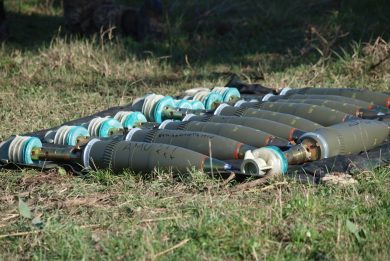
EUROPE INSIGHT – What the 2025 NATO Summit means for EU and Transatlantic Defense
The 2025 NATO Summit in The Hague has marked a pivotal moment in the evolution of transatlantic security.
The adoption of the 5% defense investment norm, the reaffirmed commitment to Ukraine, and the high-profile diplomatic presence captured global headlines. Yet the real shift is unfolding beyond the spotlight: a strategic rebalancing that will redefine NATO ’s deterrence posture, reshape defense-industrial collaboration, and set the trajectory for Europe’s long-term security and resilience.
Deterrence: Beyond Budgets and Ammunition
The commitment to higher defense spending is a milestone—but credible deterrence demands more than financial resources. It requires political will, strategic clarity, and cross-border coordination. Europe’s security landscape is still fragmented, marked by incompatible weapon systems, national procurement processes, and uneven capabilities.
Modern deterrence depends on much more than troops and tanks. Military mobility, cyber readiness, medical infrastructure, and resilient logistics all play critical roles in shaping an adversary’s calculations. The ongoing war in Ukraine underscores this reality. Ukrainian forces have demonstrated how to integrate Western systems into high-intensity operations—transforming their battlefield experience into invaluable lessons for NATO. Supporting Ukraine is not just a geopolitical necessity; it’s an investment in Alliance effectiveness.
A Turning Point for Europe’s Defense Industry

The Summit has brought into focus an urgent imperative for Europe’s defense sector: scale up, streamline, and collaborate. Meeting the 5% norm and closing capability gaps will require a step change in industrial capacity—and a shift away from national silos.
Start-ups and smaller innovators in particular need clearer pathways to market. To prevent promising innovations from stalling before they reach full deployment, governments must provide stable funding, secure early-stage contracts, and ensure integration into joint procurement frameworks. This is essential not only for innovation but for strengthening Europe’s own defense ecosystem.
Rather than replacing U.S. industrial capabilities, Europe must focus on building complementary strength. A more capable and coordinated European defense industry enhances Alliance resilience while supporting a balanced, mutually beneficial transatlantic partnership.
Procurement reform is central to this transformation. Ministries of Defense must simplify acquisition procedures, reduce administrative delays, and provide long-term predictability for suppliers. Many countries already struggle to spend their current 2% allocations. Without swift reforms, the expanded budgets risk being underutilized—or misdirected.
Civilian Industry: A Strategic Contributor
The NATO Summit also marked a breakthrough for civilian industry’s role in defense and resilience. With up to 1.5% of GDP earmarked annually for critical infrastructure, civil preparedness, cyber defense, and innovation, a new playing field is emerging—one where civilian and military efforts must align.
From cybersecurity and supply chain resilience to medical technology and sustainable infrastructure, civilian sectors are essential to meeting NATO’s broader objectives. However, real impact requires strategic engagement. Industry must anticipate where capabilities align with defense needs and actively shape how funds are allocated and implemented.
The Summit declaration leaves room for interpretation—and influence. Now is the time for forward-leaning civilian actors to define their place in NATO’s evolving security architecture.
National Governments: From Commitment to Delivery
The burden of execution now rests with national governments. The decisions taken in The Hague come with a deadline: NATO’s capability and spending review in 2029. Governments have a narrow window—perhaps two years—to demonstrate real progress.
Key priorities include accelerating procurement, enabling joint initiatives, and fostering industrial partnerships across borders. Equally important is public communication. Defense spending must be framed not only as a strategic necessity, but as an investment in national resilience, technological leadership, and economic security.
Failing to act risks not only underperformance but the erosion of political and public support. Success depends on speed, coordination, and credibility.
The NATO Summit 2025 has set a bold new direction. The question now is not whether the Alliance is committed—but whether governments, industries, and institutions can deliver. The time to act is now.
Photos courtesy NATO
* Attilio Caligiani is Partner at FGS Global; Maj. Gen. (Ret.) Koen Gijsbers, is Senior Advisor at FGS Global and is the former CIO of the Dutch Ministry of Defence and Director General of the NCIA (NATO Communication and Information Agency); Lt. Gen. (Ret.) Rob Bertholee is Senior Advisor at FGS Global, former Commander of the Royal Netherlands Army and the Head of the Dutch General Intelligence and Security Service (AIVD).



